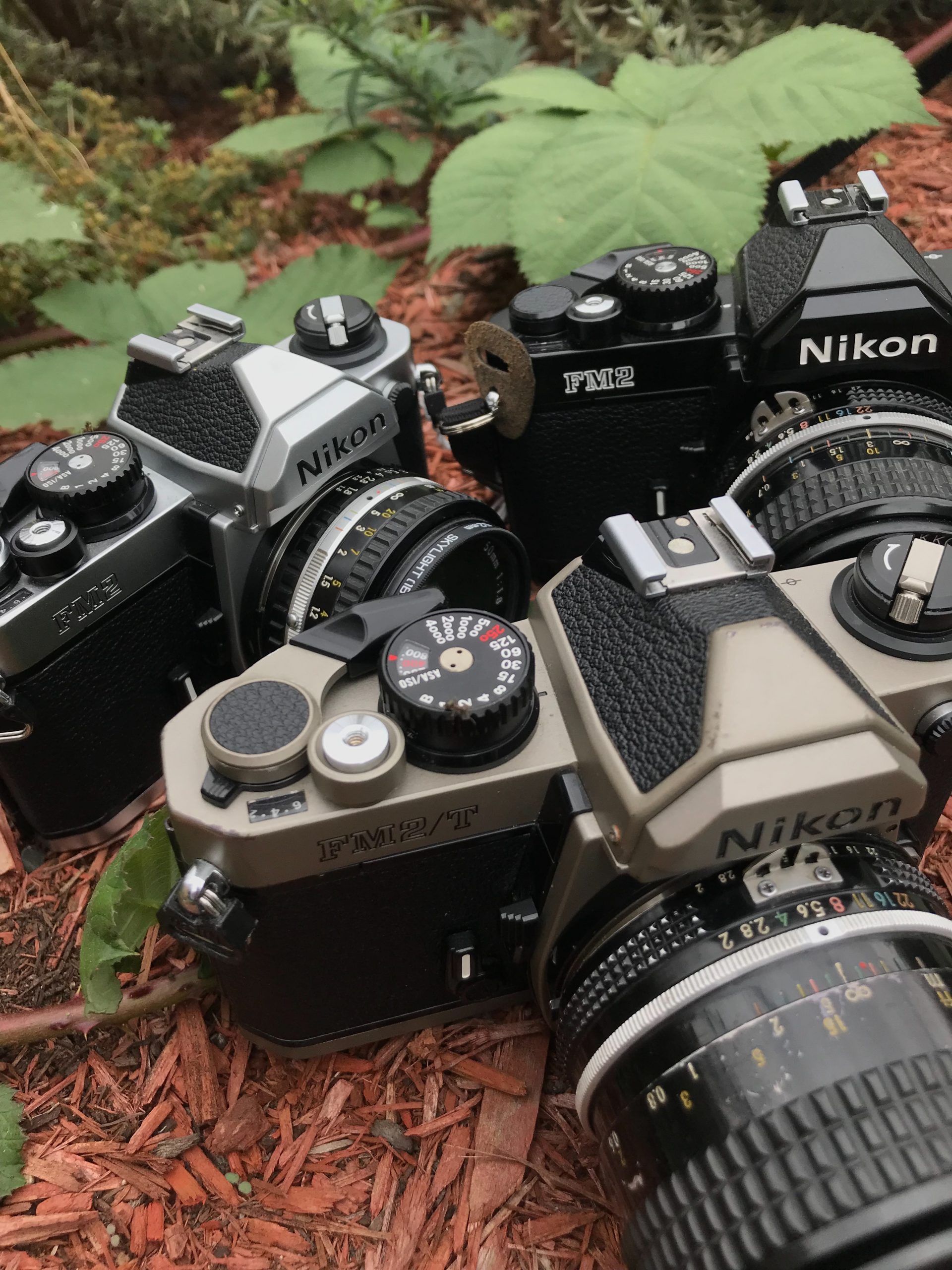The Nikon FM2 has built quite the reputation over the years as being a spectacular, no-frills get you through anything film camera. It’s fully mechanical, it has a center weighted 60/40 meter that’s quite reliable and it’s tiny! And of course, the feature that sets it (and its electronic FA and FE2 cousins) apart from other manual cameras? The blistering flash sync speed of 1/250th and top shutter speed of 1/4000th (!). Only one other mechanical and manual camera has matched those and maybe improved on it, and that is the rarer and more expensive Contax S2 ten years later.
The FM2 was made from 1982 to 2001, for 19 years. There was a few changes made over its lifetime, the most notable of which was the FM2n in 1984, which saw a faster flash sync speed and an improved titanium bladed, honeycomb shutter, which itself was replaced by a aluminum shutter in 1989. There was also a special ultra durable version called the FM2/T released in 1993, which has a lighter and stronger titanium clad body instead of the regular copper-aluminum alloy.
The FM2 shared the same basic architecture with the FE, FM, FA, FE2 and the great FM3a, which meant that this proven chassis was in production for almost 30 years. There is nothing wrong with this, as the compact and durable body also shares the same quality control and tight tolerances that Nikon used for their high end professional cameras like the F3 and F4. The FM2 might not be as small as the Olympus OM-1 or Pentax MX, but neither of those cameras have as fast a shutter speed or the smooth operation as the Nikons. And indeed, it is still quite small compared to the F3 or F4.
This meant that it was often used a lightweight, backup body for many professional photographers as it offered a barebones, no frills and mechanical alternative to other electronic cameras such as the other models made by Nikon. Steve McCurry used one with the 105mm 2.5 AIs lens to take his most famous Afghan Girl portrait on Kodachrome. Its reputation for toughness is partly why it lasted so long on the market.
The other reason that the FM2 outlasted its electronic contemporaries throughout the 90s is that it simply provides a great tactile experience. While yes, it was used by many professionals, it was also quite popular with advanced amateurs, or prosumers as they’re known these days. The advance lever is smooth while still giving feedback, the shutter speed dial turns with only a little force applied and the shutter itself feels and sounds light. Perhaps some parts are too plastic and feels cheap as a result, like the rewind and advance levers, but everything else is solid. If there is one disadvantage to this camera, it is its less than 100% coverage viewfinder. The FM2 only has a 93% coverage viewfinder.
Not to say that the viewfinder isn’t great. The 60/40 center weighted metering system is very reliable, if not perfect. It does a good job in most situations, but it does struggle in low contrast situations as it tries very hard to get an average light reading. 18% of the circle in the centre of the frame needs to be gray, otherwise you will not be able to get a proper exposure reading. Later Nikon bodies vastly improved on this or even ones contemporary to the FM2 like the F3HP and FA, but for the most part the FM2 metering system just works. The LED display is very straightforward as well, opting for three symbols (-, o, +) instead of a less accurate needle. I think the display is in fact better than the F3, even.
The F-mount the camera uses also lets you use some of the best vintage lenses any company has to offer. Make no mistake, it wasn’t like the major manufacturers like Canon, Pentax, Minolta, Olympus etc didn’t make equally great lenses but some of the Nikkors are famous for their quality. Lenses like the 35mm f/1.4, 105mm f/2.5, 180mm f/2.8 ED, 300mm f/2 and 55mm Micro- Nikkor f/2.8 are legendary for their resolving power. There were some stinkers too (ehem, the 43-86mm must be one of the worst lenses made by a big name) but for the most part the lenses are spectacular.
As a testament to how much we like it here at Beau, half the staff here owns or have owned a FM2n while I personally have the FM2/T. It has become my bad weather camera as it’s a lot more dependable than my other cameras when it comes to taking a few knocks (not that I condone that). If you already own an FM, I wouldn’t say that the FM2 will feel like a significant upgrade as the layout and feel is almost exactly the same. But if you’re a Nikon shooter of some other sort, digital or film, the FM2 is a worthy addition to your arsenal as it provides an experience few other cameras do these days – that of a camera that will confidently get you through any situation.





